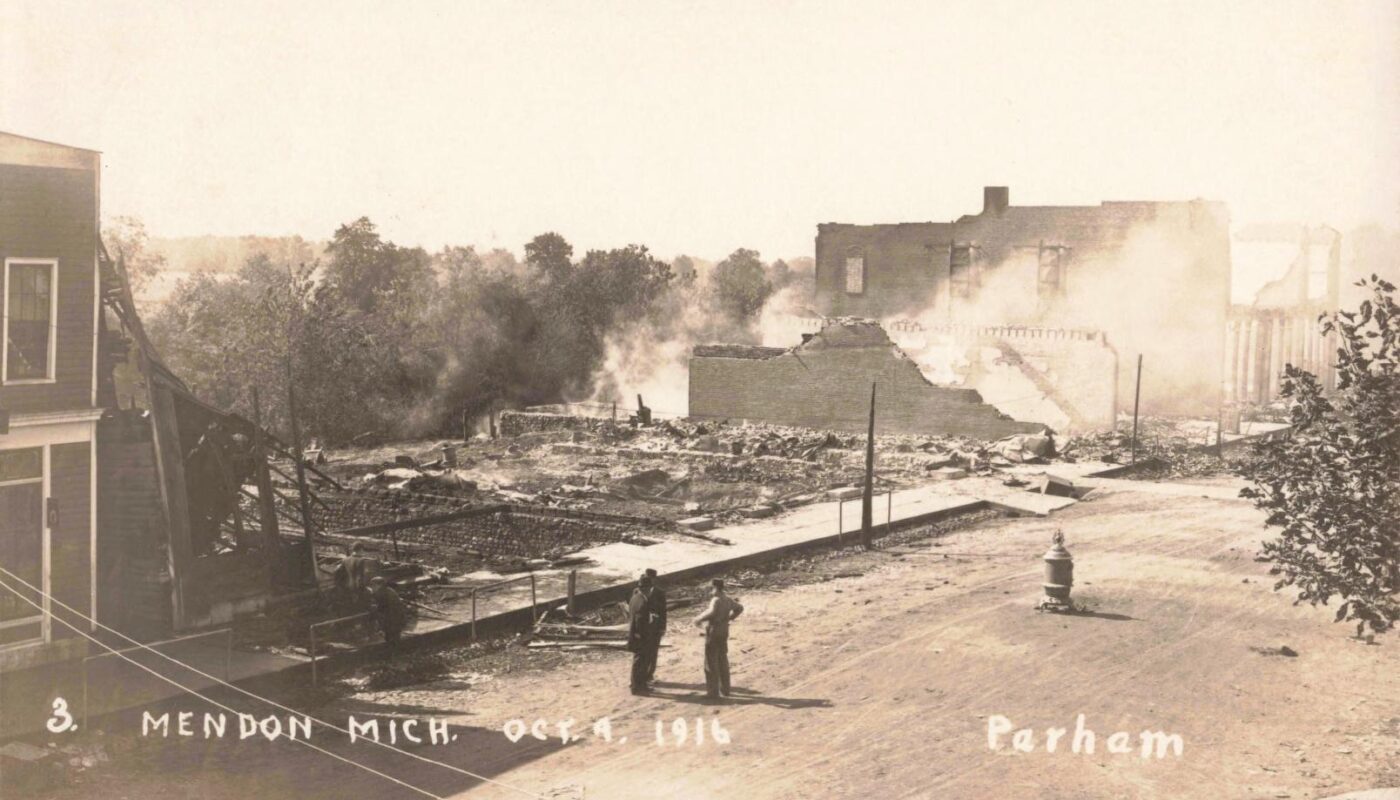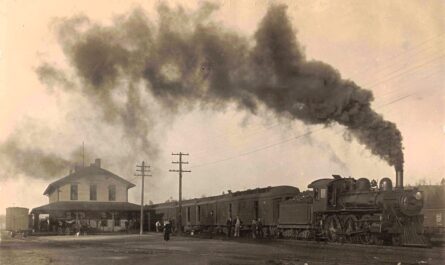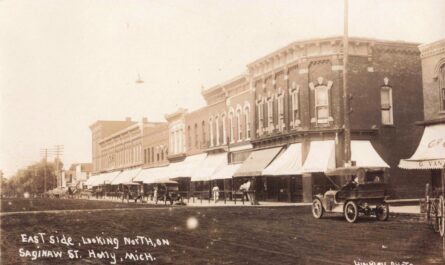On the night of October 4, 1916, the village of Mendon, Michigan, fell victim to one of the most destructive fires in St. Joseph County history. What began as a small blaze in a butcher’s shop grew into an inferno that destroyed nearly the entire downtown business district. The 1916 Mendon fire not only erased buildings but also reshaped the history of Mendon Michigan, for generations to come.
Video – When Mendon Burned – The Michigan Town That Vanished Overnight
A Quiet Village on the St. Joseph River
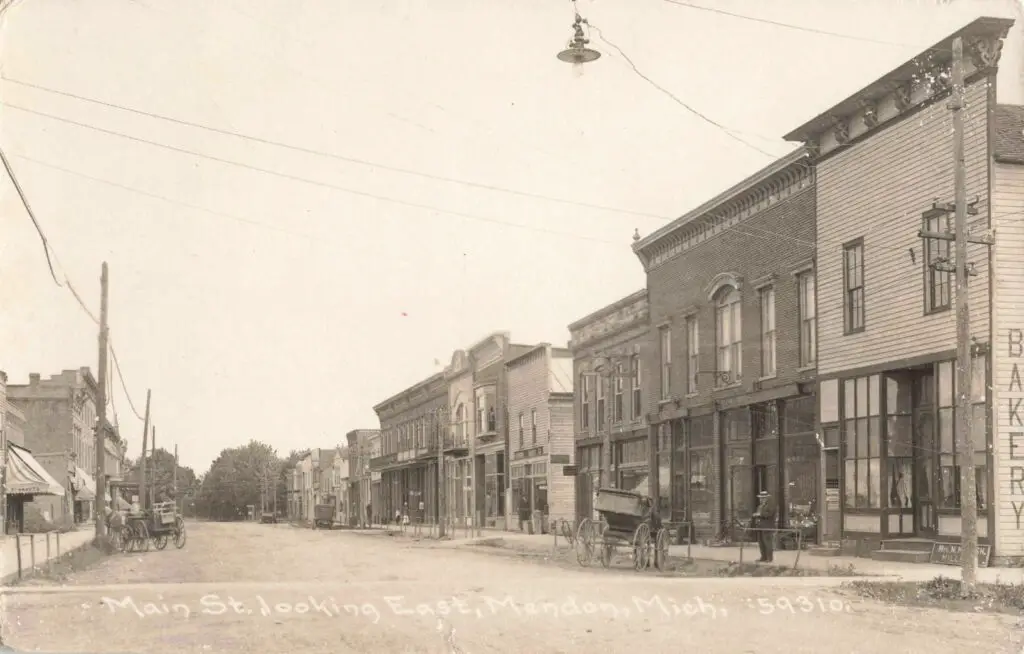
Mendon sits on the St. Joseph River in southern Michigan, about 25 miles south of Kalamazoo. Settled in the 1830s, the town grew around the mills and trade routes that lined the river. By the late 1800s, it had become a modest but prosperous community. The arrival of the Grand Rapids and Indiana Railroad in 1870 linked Mendon to the rest of the state, bringing commerce, travelers, and opportunity.
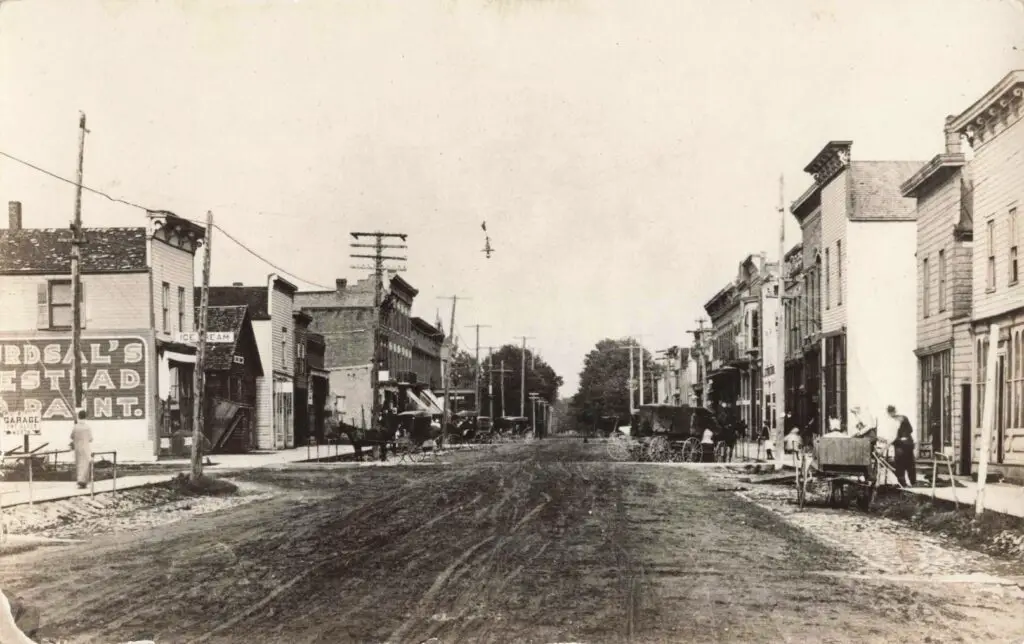
By 1916, Mendon’s Main Street reflected small-town prosperity. Two-story wooden storefronts lined the road—grocers, hotels, a post office, an opera house, and even an early movie theater. Locals gathered in Royer’s Meat Market, the center of town commerce and gossip. But within hours, that same building would become ground zero for disaster.
1916 Mendon Fire – The Night the Flames Arrived
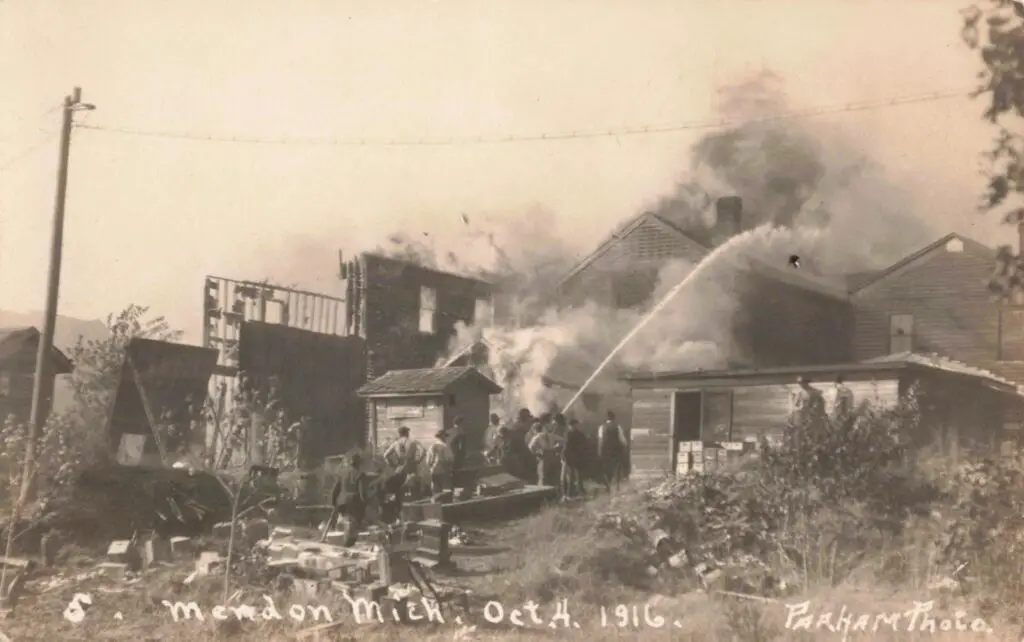
Shortly after midnight on October 4, 1916, flames erupted in the rear of G. A. Royer’s Meat Market. The cause was believed to be a spark from rendering lard. The small volunteer fire department quickly responded, but their equipment was no match for what followed. Mendon’s only water supply came from a line running to the river. When firefighters rushed the steam pump down the riverbank, the machine slipped off its rigging and tumbled into the stream.
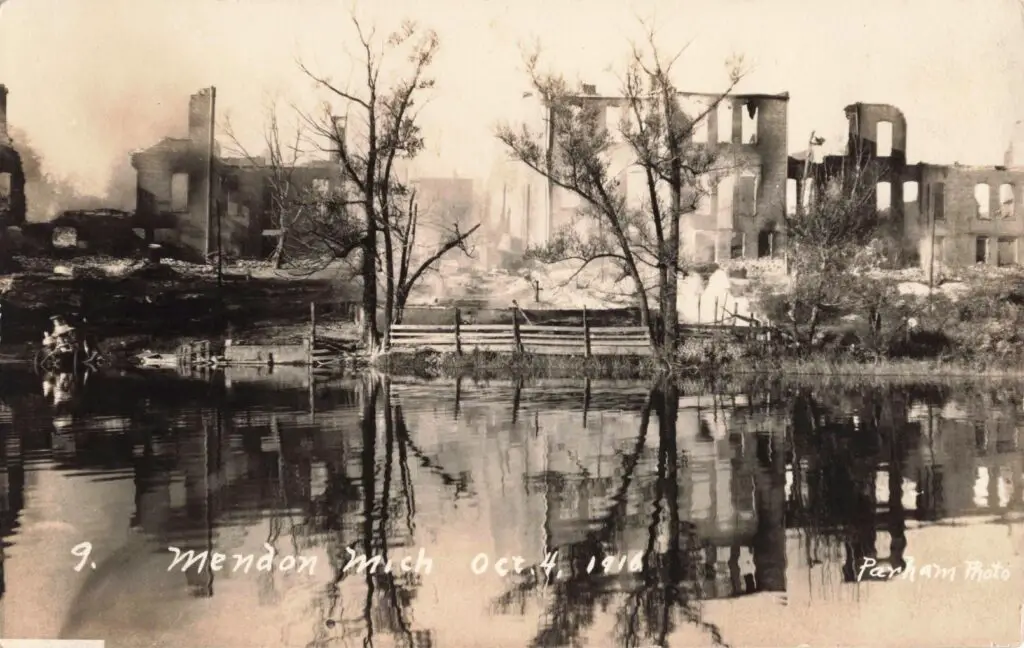
With no pressurized water available, the fire spread unchecked. Witnesses said the sky glowed red as the business blocks caught one after another. Telephone operators at the local exchange stayed at their posts, calling for help from Kalamazoo, Sturgis, Three Rivers, and Vicksburg while the walls of their own building began to smoke.
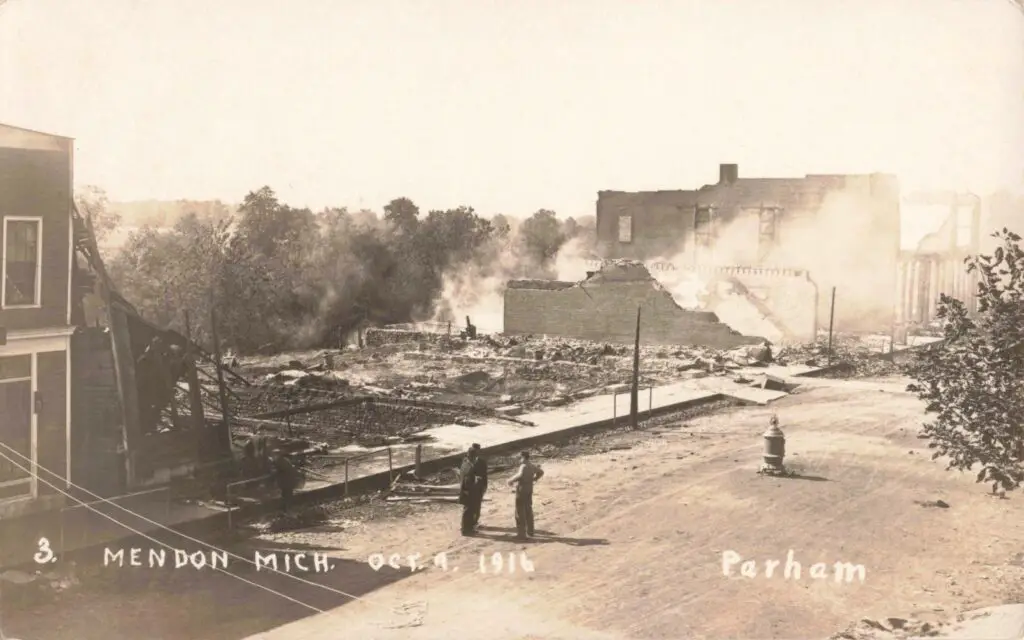
By 2 a.m., the entire heart of Mendon was engulfed. Residents carried what they could from shops and homes, stacking belongings on wagons and in the streets. The dry autumn air fanned the flames through blocks of tightly packed wooden structures.
“Virtually Wiped Off the Map”

By dawn, 39 business buildings and homes lay in ruins. Contemporary reports estimated the total loss between $225,000 and $250,000—a staggering figure in 1916, equivalent to about $7 million today. The Kalamazoo Gazette-Telegraph headline the next morning read: “Fire Destroys Village of Mendon – Little Town Wiped Out with Loss of $250,000.”
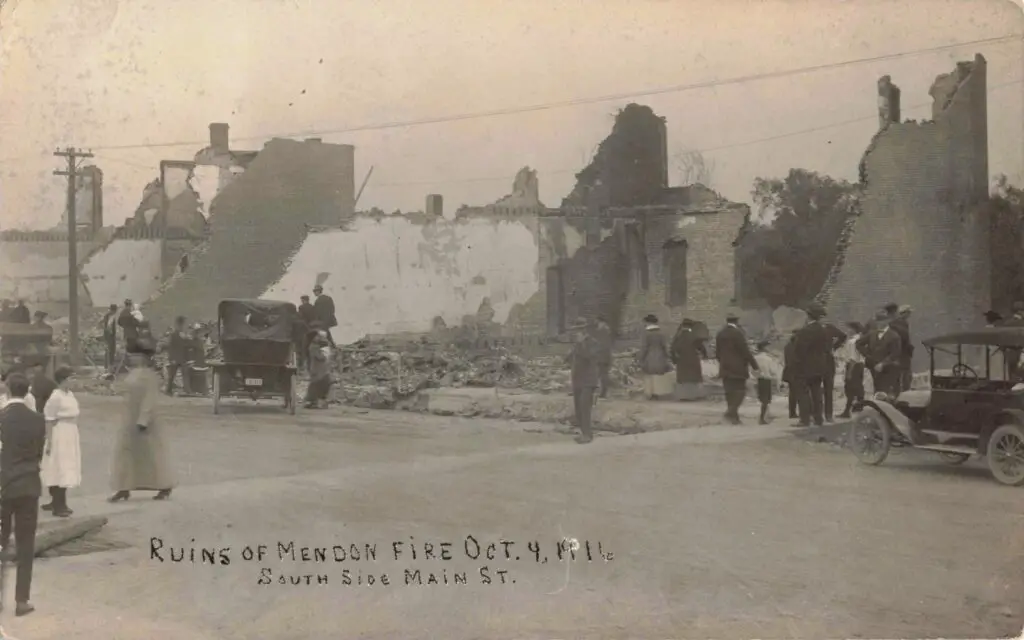
The destruction was near total. The Burdick Hotel, the Mendon Opera House, the Masonic Hall, several general stores, a drug store, a tailor shop, and multiple residences all burned to the ground. Only a few brick walls remained standing, blackened by smoke.
Volunteer crews from surrounding towns arrived too late to save the village center. Their steam engines hissed in frustration as water hoses froze or burst from overpressure. In the end, the only thing that stopped the fire was the lack of anything left to burn.
Mendon’s Aftermath and Rebuilding
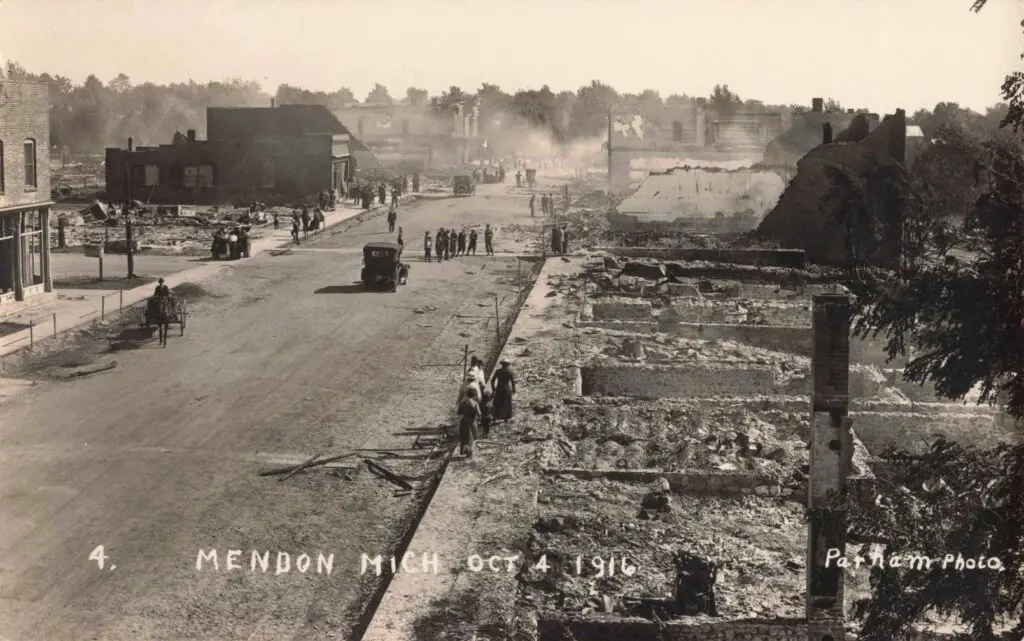
The morning after, Mendon residents faced a grim reality. The town’s food supply was gone. Winter was weeks away. Farmers and townspeople opened barns to shelter families who had lost their homes. Churches organized relief drives, and nearby towns sent wagons of goods.
Despite the devastation, there was no talk of abandonment. Within months, reconstruction began. This time, the new Mendon would not be built in wood. Business owners turned to brick and stone, materials that promised to resist another fire. Insurance funds and bank loans financed new storefronts, and by 1918, Main Street was lined with sturdier structures.
The rebuilt downtown, still visible today, stands as a direct result of that fire. Each block tells part of the history of Mendon Michigan—a story of endurance, adaptation, and the will to rebuild.
Life Before and After the Fire
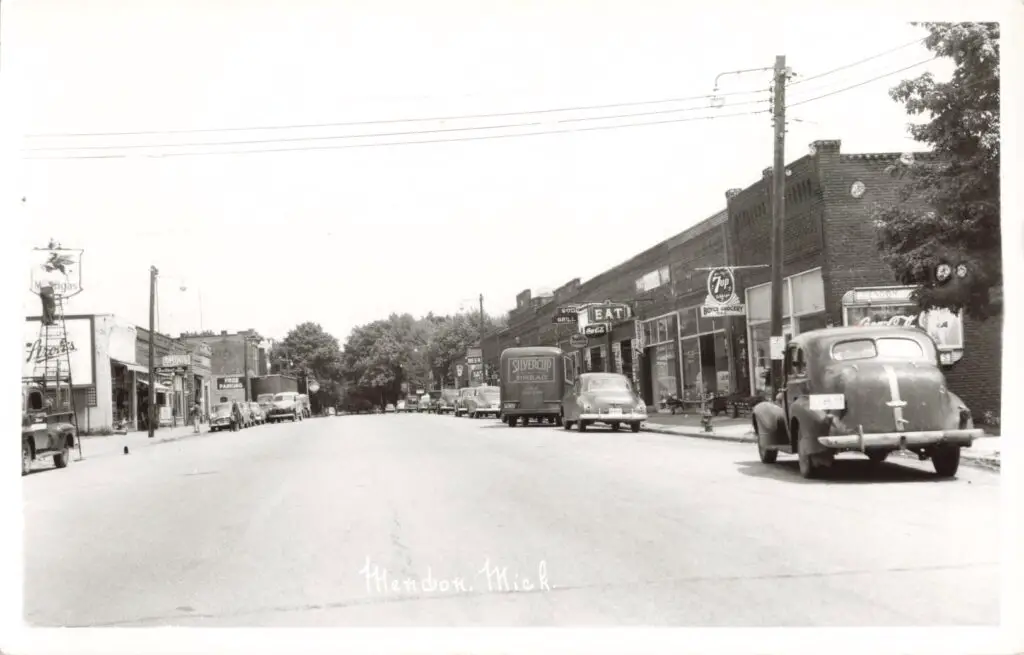
Before the 1916 Mendon fire, the area’s economy centered on agriculture and small manufacturing. The railroad shipped grain, lumber, and livestock through town. After the fire, some long-standing businesses never reopened. Others found success in the new economy that followed World War I.
The Mendon Opera House, which once hosted traveling vaudeville acts, was never rebuilt. The new Hickmott-Dukette Company built a brick department store on the site of its wooden predecessor. A new post office, a hardware store, and several grocery stores followed. The fire changed not just the town’s look but also the kinds of businesses that could thrive there.
Remembering the 1916 Mendon Fire
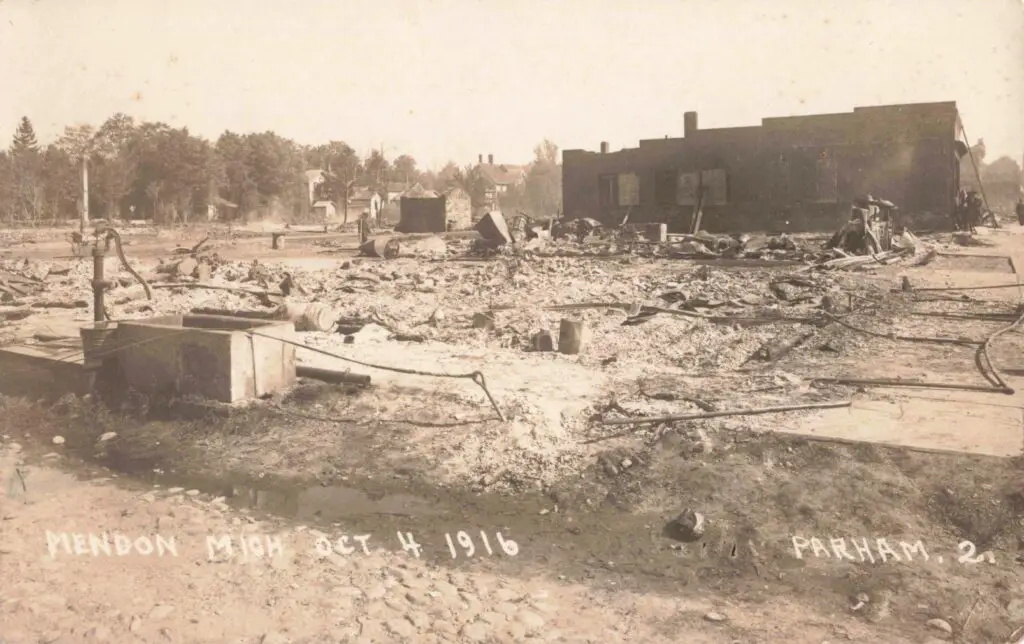
Photographs taken in the days after the blaze, many by local photographers Parham and Merritt, show a town reduced to rubble. Streets are lined with charred chimneys and broken foundations. Men in bowler hats and women in long dresses stand quietly among the ashes. In one image, a horse and wagon move through the debris while smoke still rises from the ruins.
These photos became postcards mailed throughout Michigan, their captions reading “Mendon, Mich. – Oct 4, 1916.” They served as both record and reminder of a night that changed everything.
In later years, Mendon rebuilt not only its structures but its spirit. Local historians preserved the memory through centennial exhibits, newspaper retrospectives, and public archives. The St. Joseph County Historical Society still lists the 1916 fire as one of the most significant events in county history.
The History of Mendon Michigan, Lives On
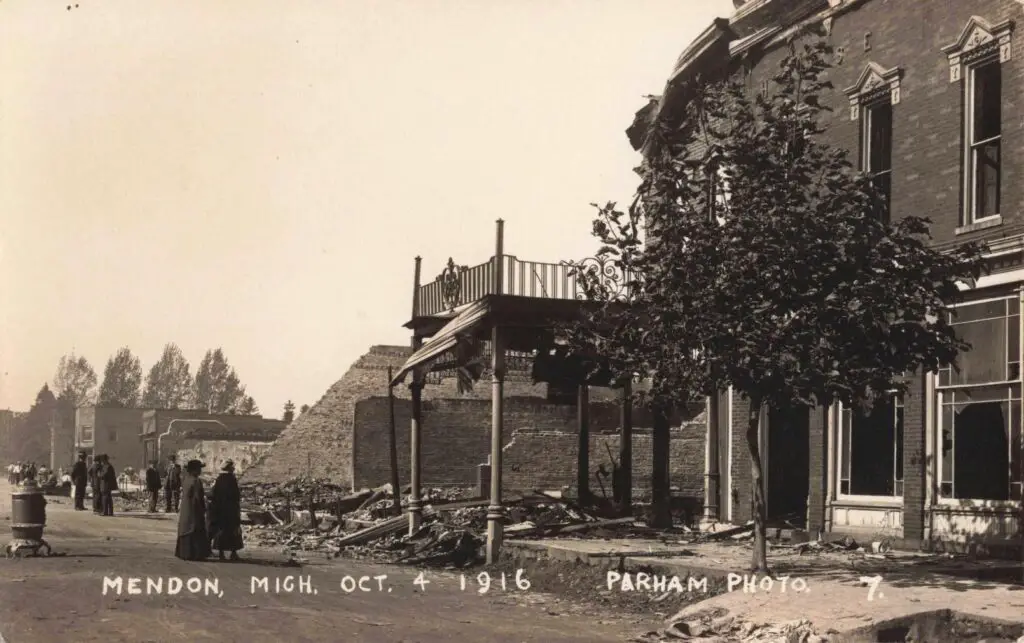
Today, Mendon is known for its quiet charm and deep historical roots. It’s downtown, rebuilt after the 1916 Mendon fire, and retains early 20th-century architectural character. The town’s historical society keeps records of the fire and the rebuilding that followed.
The story of Mendon is not only about destruction — it is about persistence through cooperation. It reflects the pattern seen across many small Midwestern towns that faced similar tragedies during an era when wood, steam, and fire coexisted dangerously.
For historians and readers interested in the History of Mendon Michigan, the 1916 fire stands as a turning point — the moment the village transformed from a frontier trading post to a modern community built in brick.
Works Cited For The 1916 Mendon Fire
“County’s Largest Fire Nearly Destroyed Mendon.” *Sturgis Journal*, 3 Oct. 2016.“A Community That Sticks Together.” *Village of Mendon News*, 24 Feb. 2025.
“Mendon, Michigan 1916 Town Fire, Parham RPPC.” *WorthPoint*, n.d.
“Mendon, Michigan.” *Wikipedia*, last modified 2025.
“Fire Destroys Village of Mendon.” *The Gazette-Telegraph* (Kalamazoo, MI), 5 Oct. 1916.
